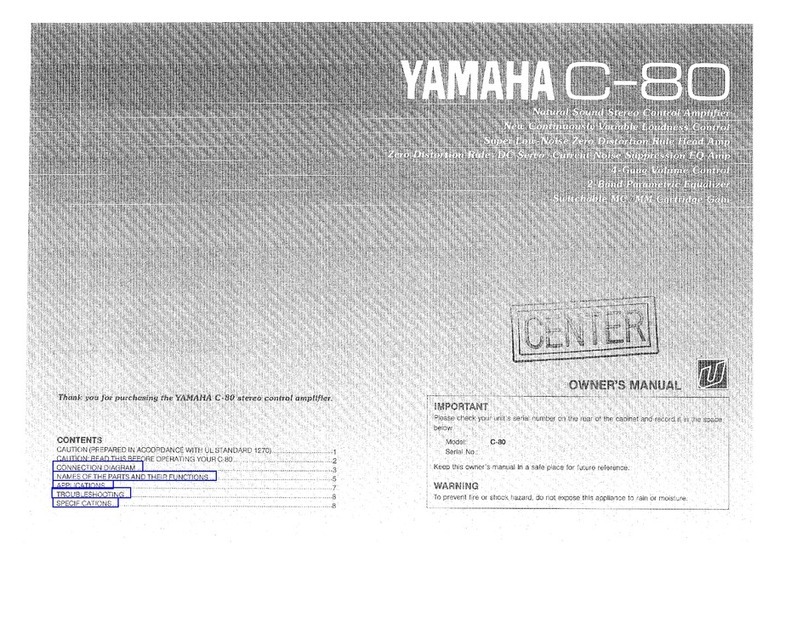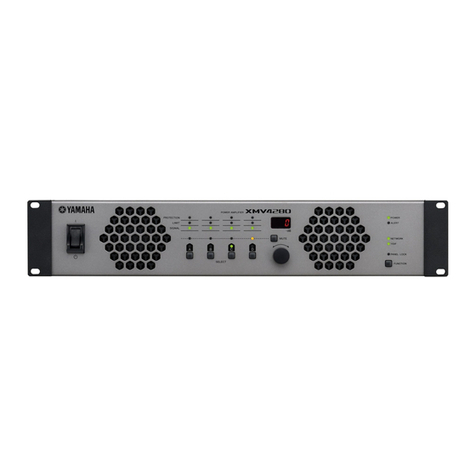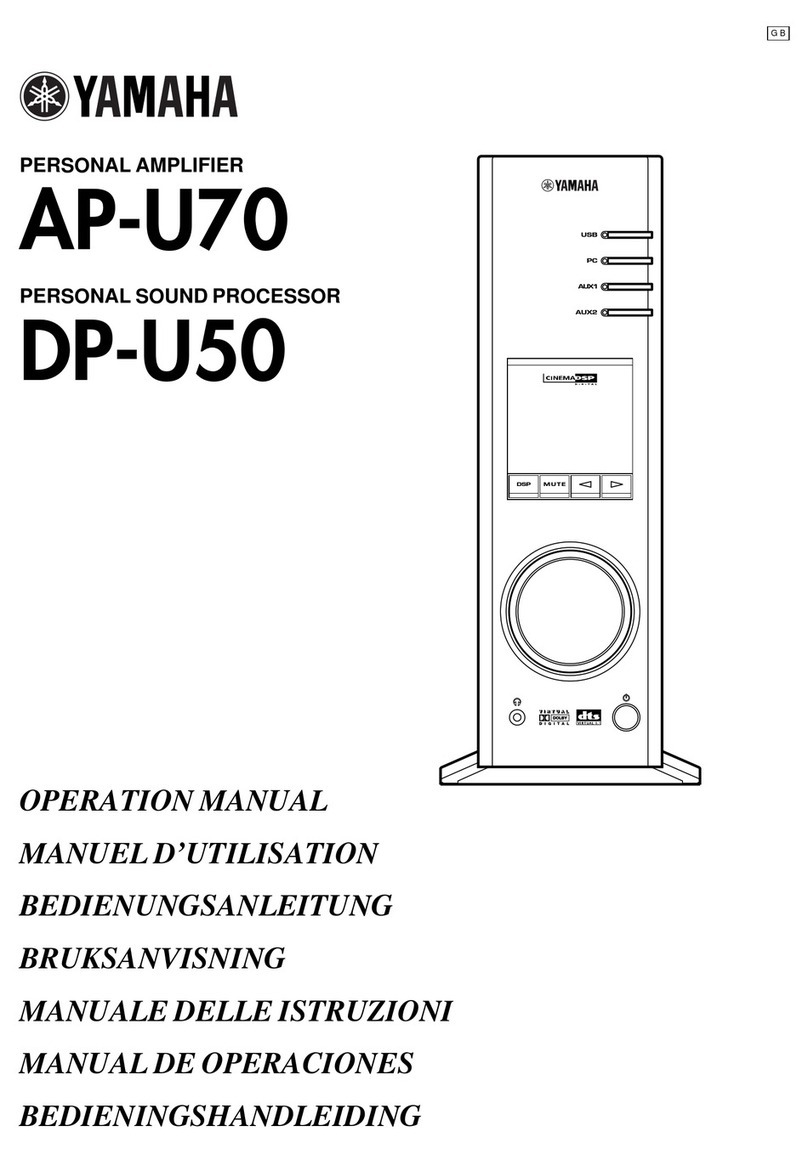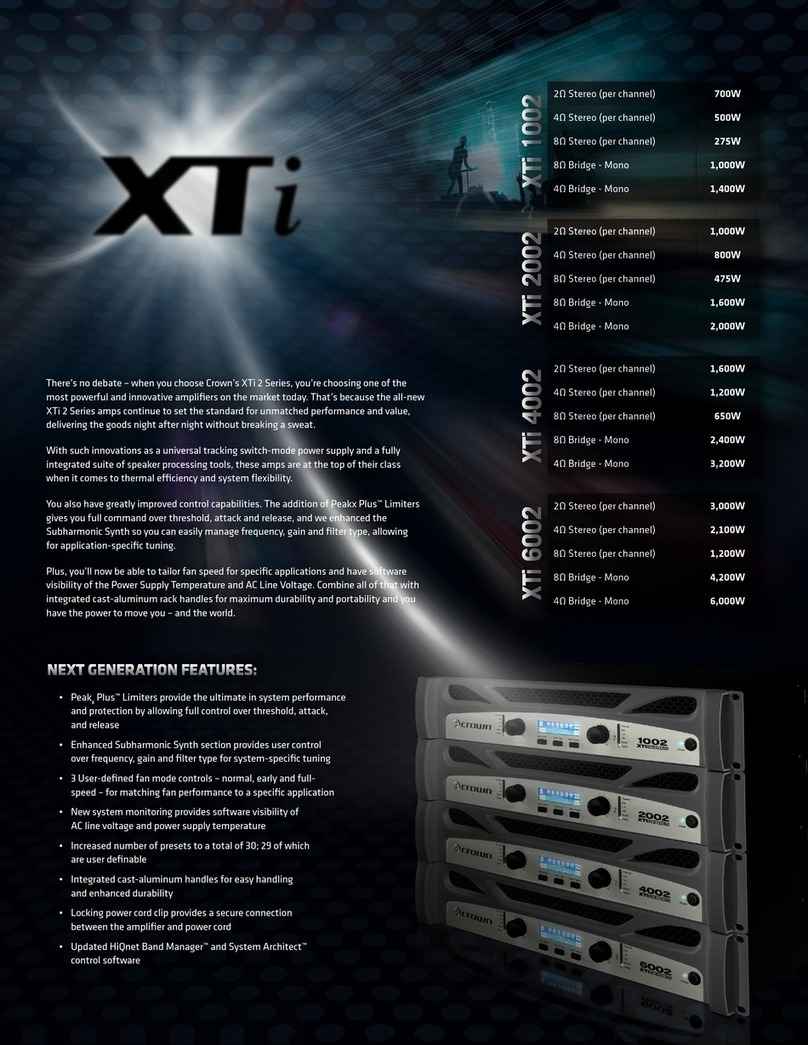Yamaha MX-70 User manual
Other Yamaha Amplifier manuals
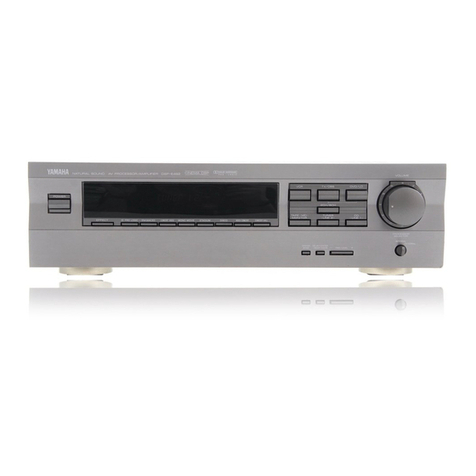
Yamaha
Yamaha DSP-E492 User manual
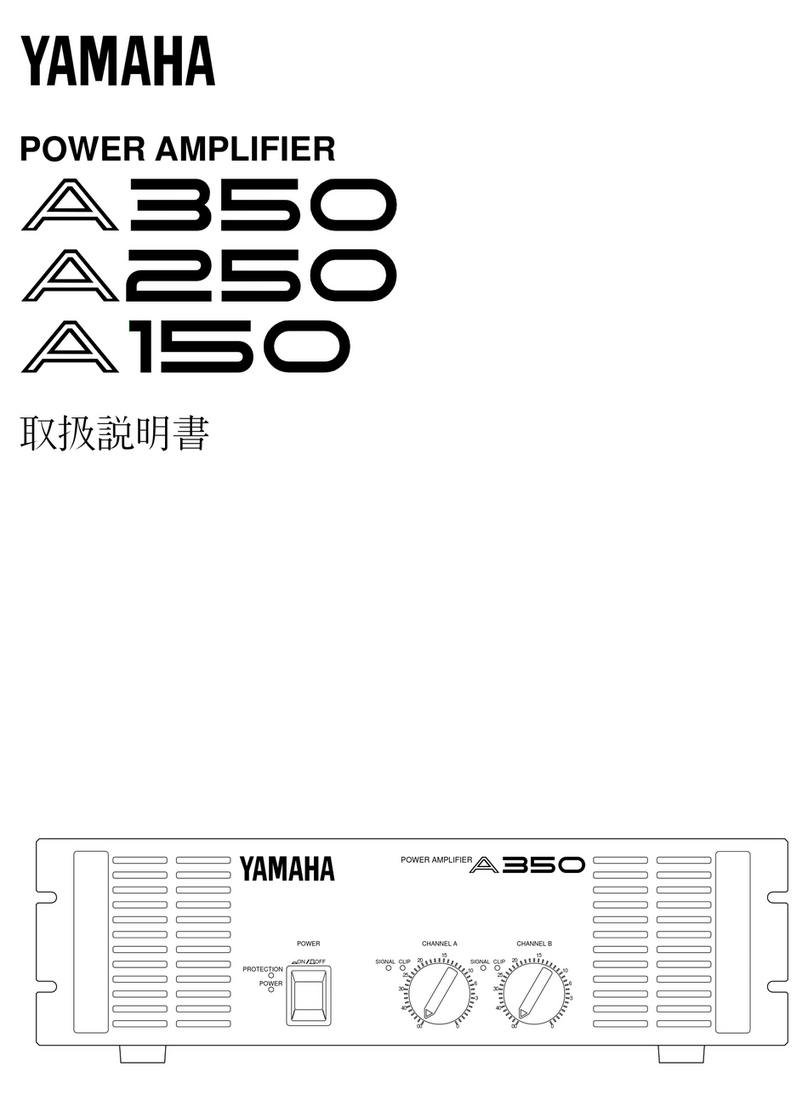
Yamaha
Yamaha A150 User manual
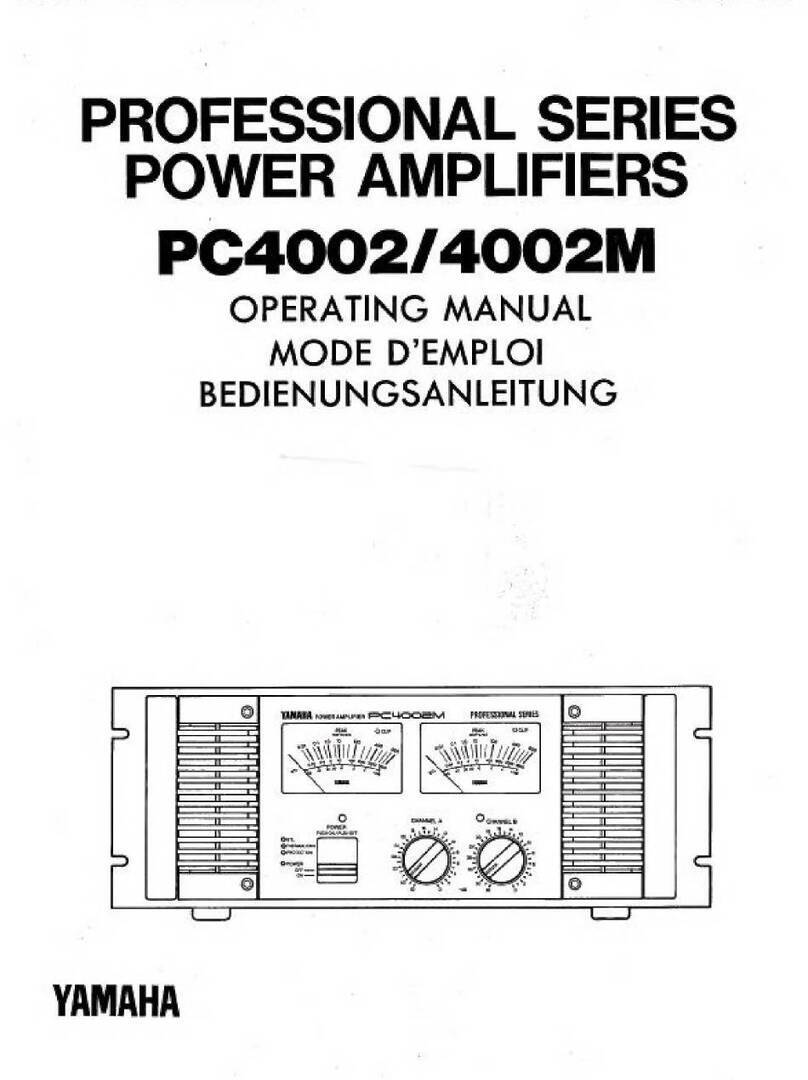
Yamaha
Yamaha PC4002 User manual
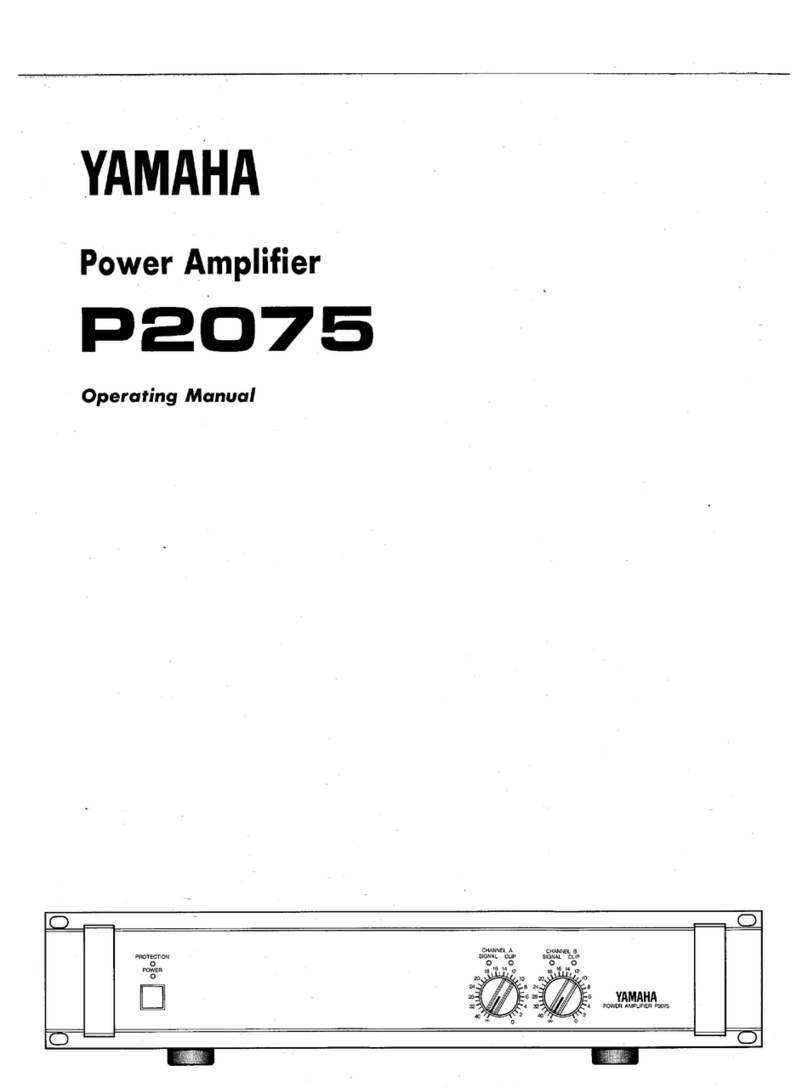
Yamaha
Yamaha P2075 User manual
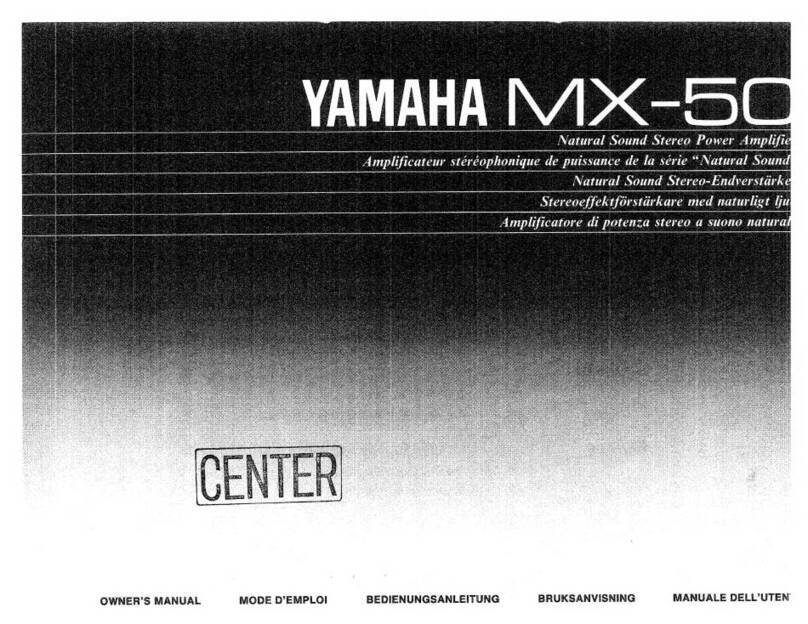
Yamaha
Yamaha MX-50 User manual
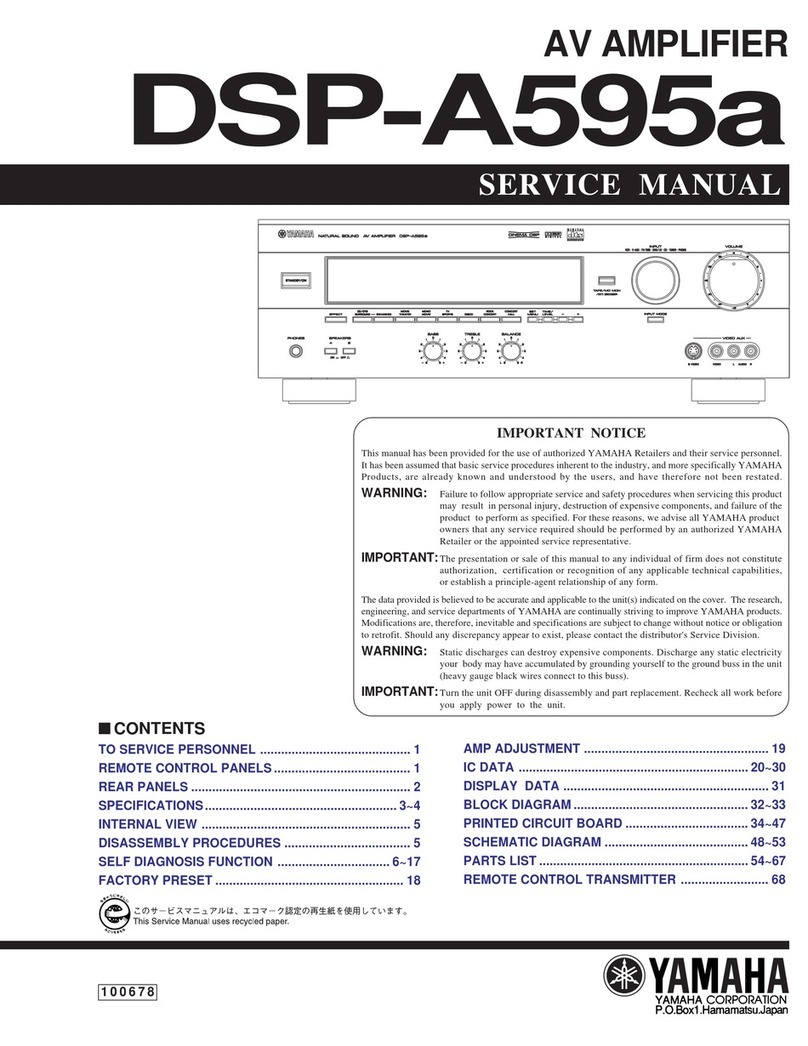
Yamaha
Yamaha DSP-A595a User manual

Yamaha
Yamaha MX-630 User manual
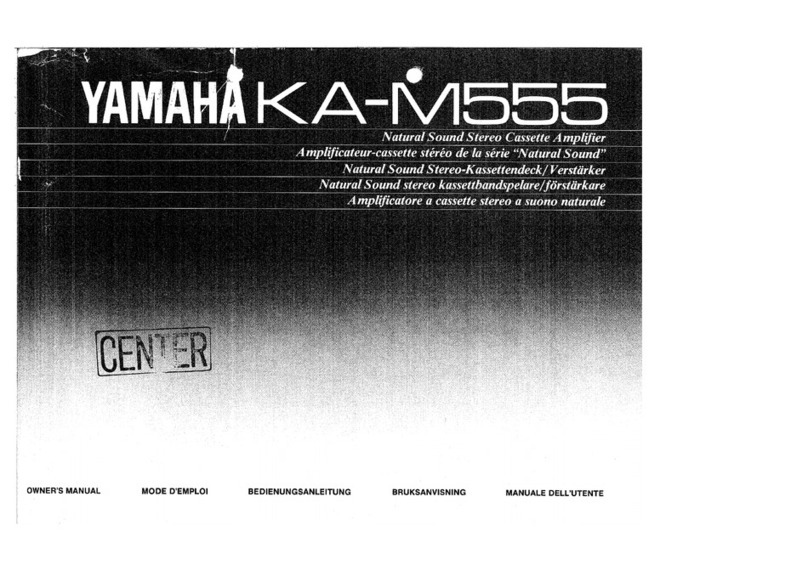
Yamaha
Yamaha KA-M555 User manual
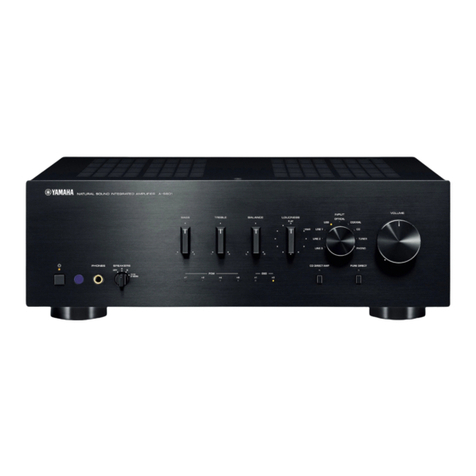
Yamaha
Yamaha A-S801 User manual

Yamaha
Yamaha A-S500 User manual
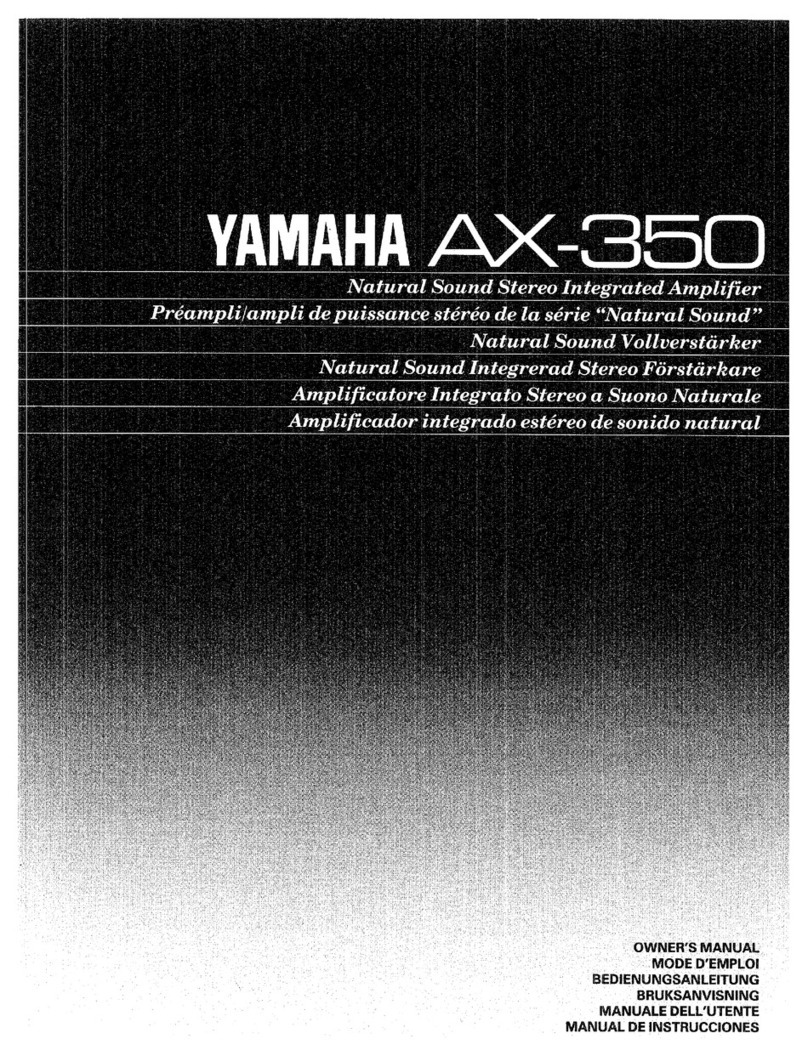
Yamaha
Yamaha AX-350 User manual
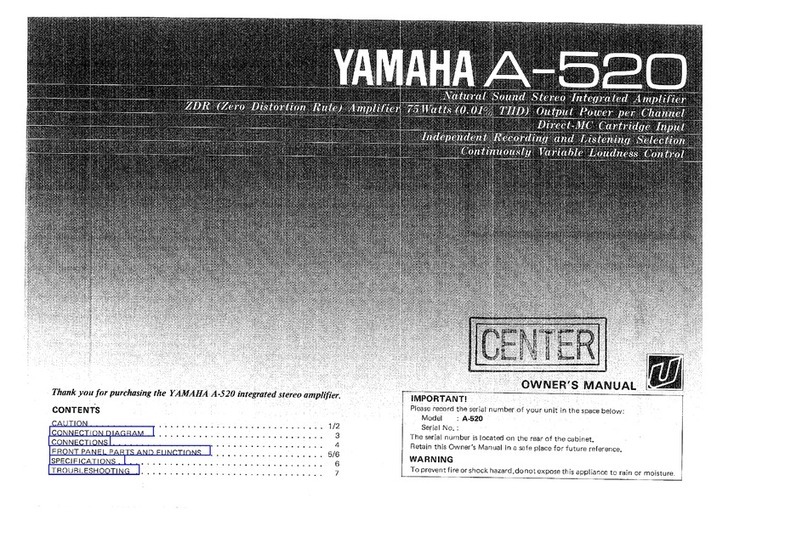
Yamaha
Yamaha A-520 User manual

Yamaha
Yamaha B-I User manual

Yamaha
Yamaha 396 User manual
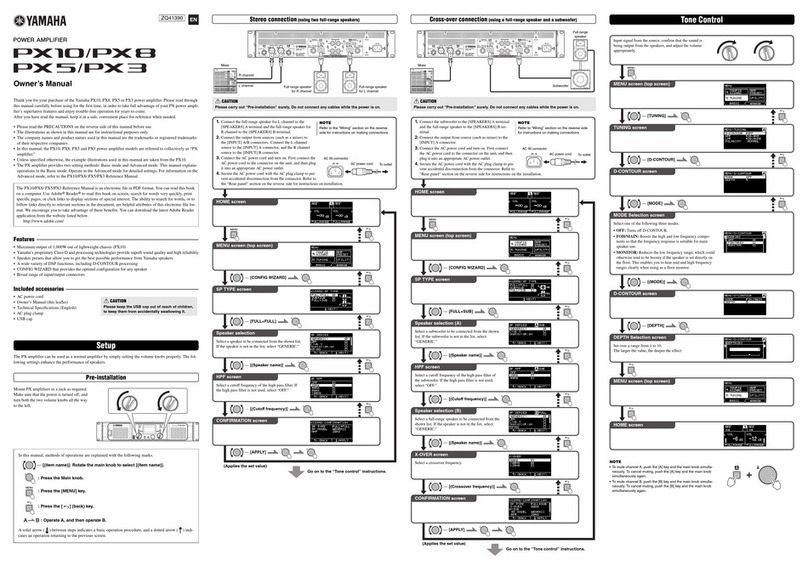
Yamaha
Yamaha PX8 User manual
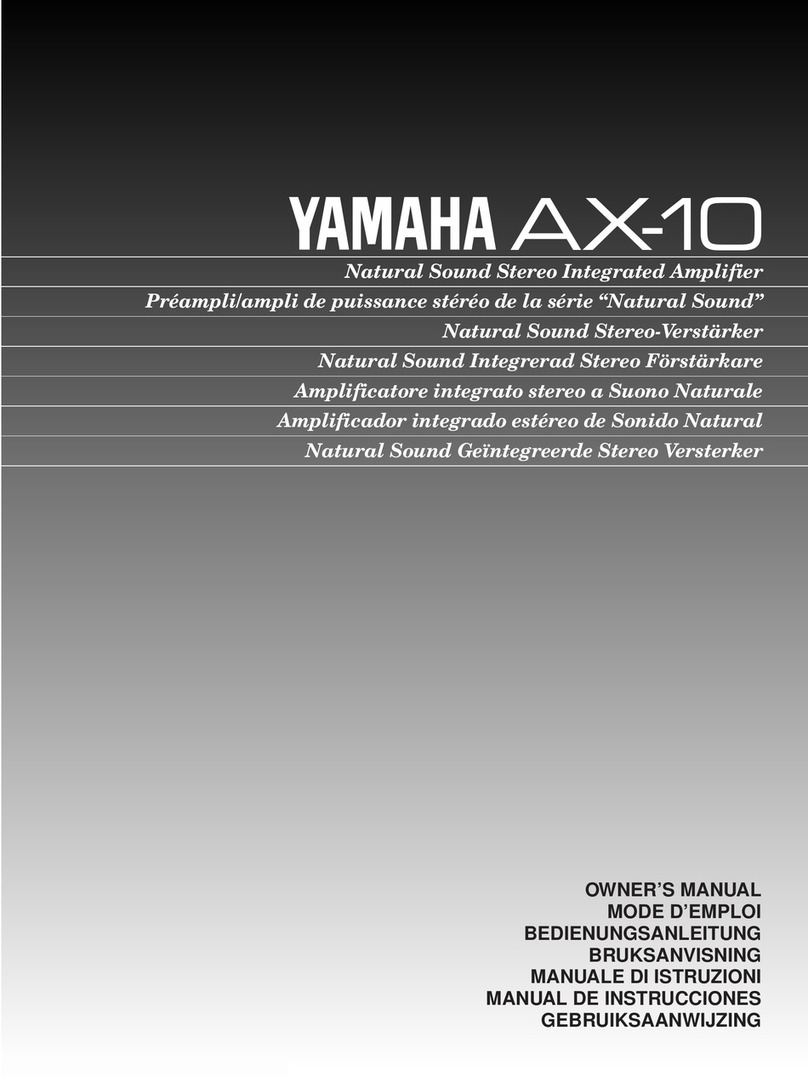
Yamaha
Yamaha AX-10 User manual
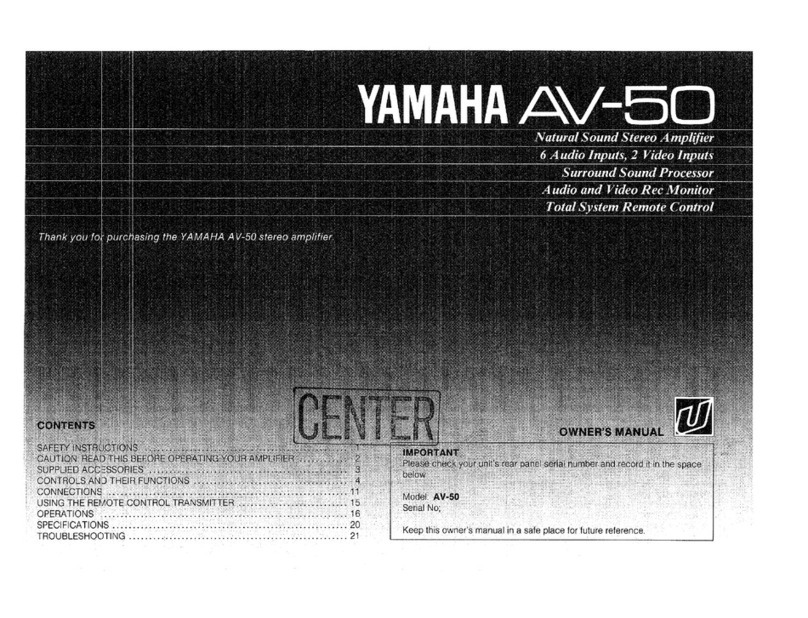
Yamaha
Yamaha AV-50 User manual

Yamaha
Yamaha DSP-AX1/RX-V1 User manual
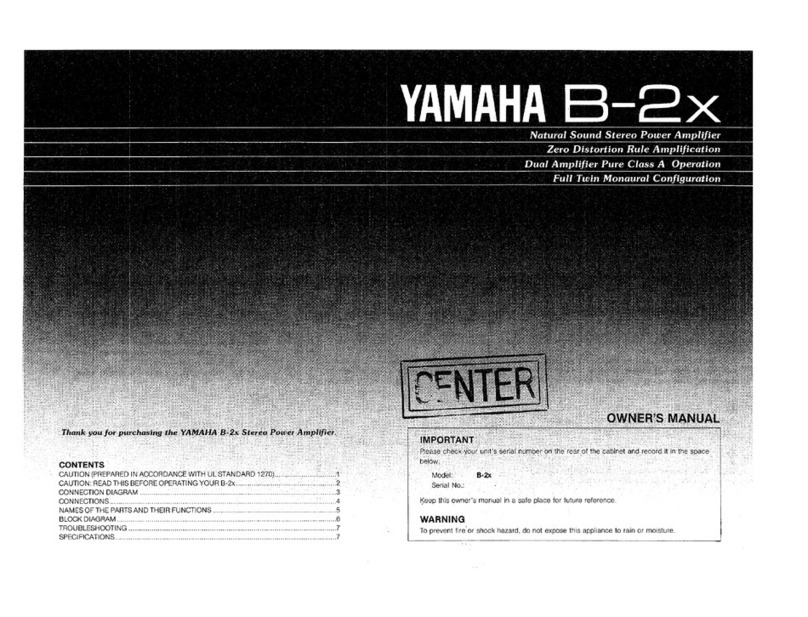
Yamaha
Yamaha B-2x User manual
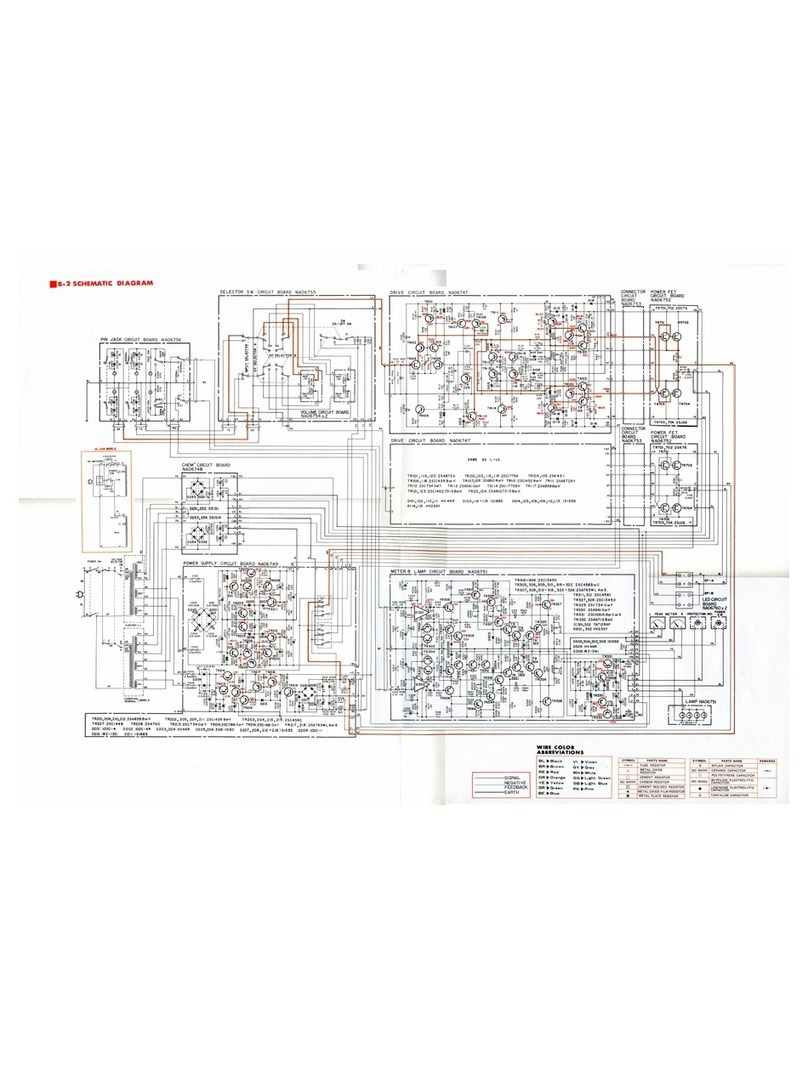
Yamaha
Yamaha B-2 User manual

